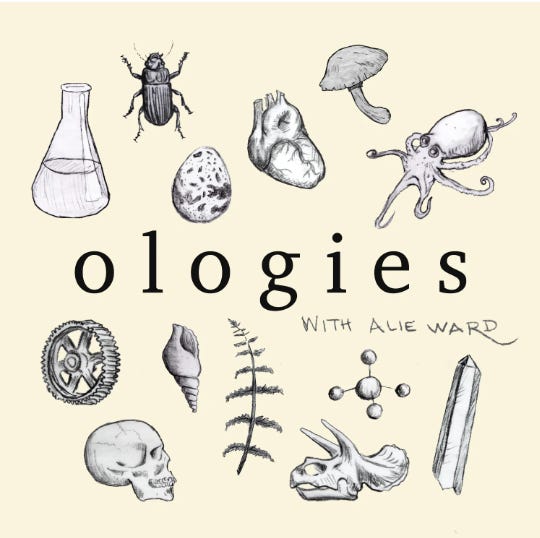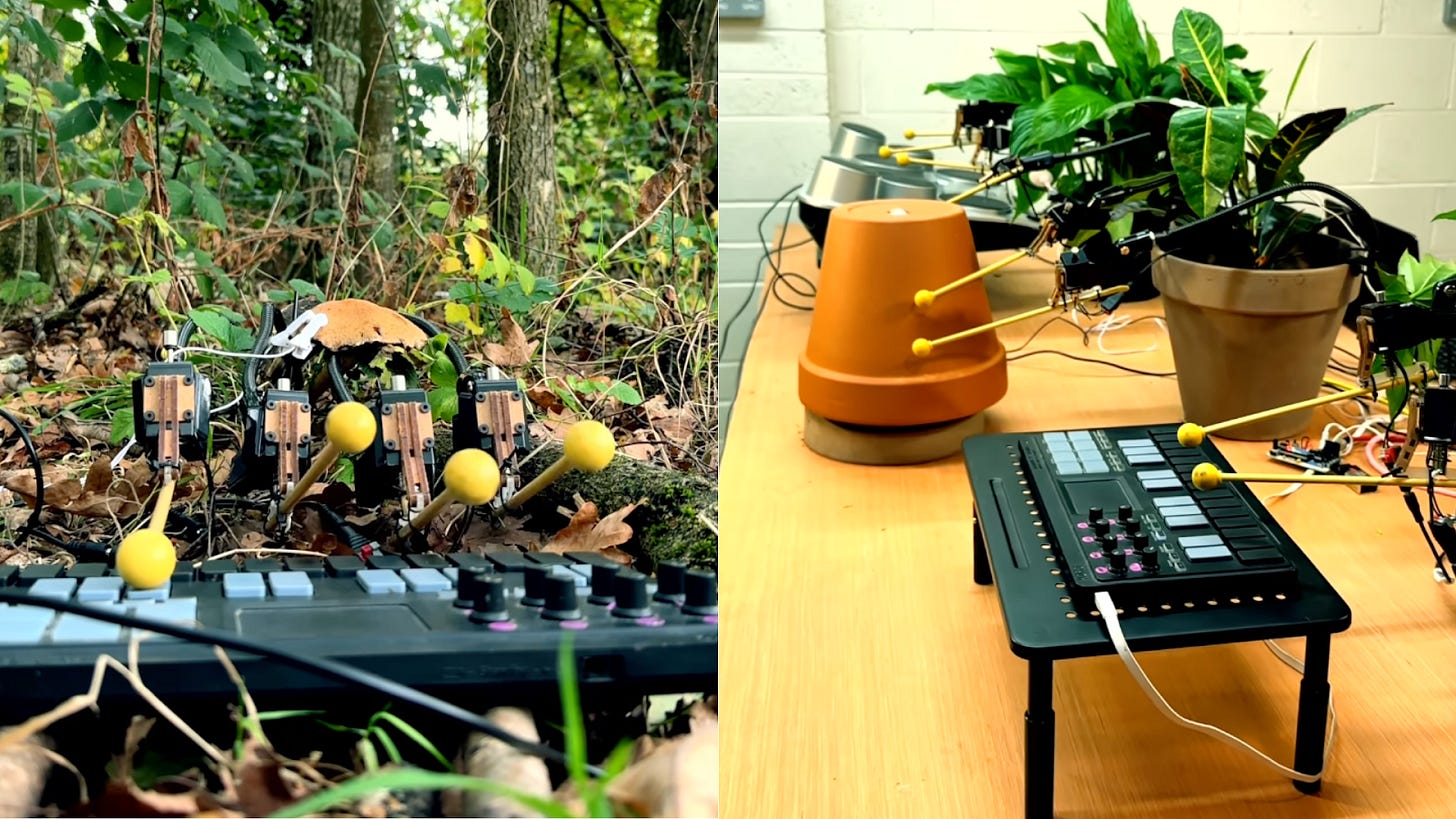#156: 🧠 How to Prevent Decision Burnout
The Neuroscience of High-Stakes Decision-Making, How It Can Lead to Decision Fatigue and What To Do
Hey Friends,
I need your help to grow my newsletter! To make Nina’s Notes even better, I need to know about YOU, my amazing readers.
I made a short 3-question survey. If you have 20 seconds, please click the link and fill it out.
Knowing more about you will help me create better content
Thank you so much!
Xo,
Nina
Now….let’s talk about decision fatigue.
When I was running my first startup, I felt like every single decision I was making was high-stakes.
And in some instances, that was very true.
When you live in this world where you have to make definitive decisions every day, ones that impact your employees lives, and your own, it can wear you down.
Leading to decision fatigue and even worse, burnout.
Decision fatigue can show up in all aspects of your life.
As a parent, you have to make decisions on behalf of your children - when to plan playdates, what extracurricular activities to sign them up for, what daycare to choose.
There are hundreds, if not thousands, of decisions each day.
I experienced serious decision fatigue while decorating my flat last year.
I felt like each decision on furniture, art, or paint color affected the aesthetic of the whole room.
Because of this, I found myself constantly searching for the best decor.
I’d find one cool coffee table and then see that adding that piece changed the whole vibe of the room.
I was so overwhelmed.
But I had to start making decisions.
Couch first.
Then rug.
Paint.
Sideboard.
It went on and on…
Until (with some help!) I created a beautiful, cozy space that I am happy to come home to each day.
That’s when I understood that decision fatigue isn’t just for CEOs and executives.
It happens to every one of us.
So what can you do to prevent decision burnout?
I’ve got some ideas.
Let’s dive in.
P.S. I recorded this episode and it’s live on my Youtube channel. Watch it here:
💬 In this note:
🧠 How to Prevent Decision Burnout
🎧 Haunted Hydrology (SPOOKY LAKES)
⚡️ Mushrooms playing music
#156: 🧠 How to Prevent Decision Burnout

As ambitious professionals, we’ve all had to make high-stakes decisions.
In the lead up to the decision, you feel the tension and the stress. You feel the pressure of the decision itself and the pressure to make a decision.
Pressure is a factor in many domains of human performance, from sports to academics….to honestly, everyday life.
It’s present when the outcome relies on our performance as well as our ability.
This pressure can be associated with a threat to your physical or psychological well-being.
And in many modern day situations, this “life-or-death” feeling of pressure is purely psychological.
This can happen during a pitch meeting, when you don’t want to embarrass yourself while speaking publicly, when you are trying to land a deal or, when you’re trying to avoid the potential loss of a financial opportunity.
Pressure can impact your ability to perform well.
Pressure is present in almost any situation when you need to complete an action or task, so it’s better to think of pressure as a spectrum rather than present or absent.
How Your Brain Influences Decision Making
Your prefrontal cortex (PFC) is the area in your brain responsible for decision-making, problem-solving, and self-regulation.
When you weigh the pros and cons of a decision or brainstorm solutions, your PFC is hard at work.
This region is highly sensitive to stress, fatigue and pressure.
High levels of stress and fatigue can impair the function of your PFC and lead to rash decisions or analysis paralysis.
Have you ever been trying to make a decision, weighing all of the pros and cons for hours…days…maybe even weeks?
And then all of a sudden your brain says “F*CK IT” and you make a decision?
That’s the collapse of your rational thinking and a rash decision as a result.
Sometimes a rash decision doesn’t result in a bad outcome, but the decision could have been reached without fatiguing the PFC.
Decision Fatigue
Decision fatigue is the mental exhaustion that builds up after making too many choices.
It’s not about being indecisive, it’s about being over-decisive.
Every ‘yes’ or ‘no’, every ‘this or that’, chips away at your cognitive resources.
For entrepreneurs, executives and also creatives who manage several freelance projects…the decisions never stop.
Unlike routine jobs with clear boundaries and structure, running your own business is full of ambiguity and options.
This is why decision fatigue can hit harder and faster.
How To Spot If You Are Approaching Decision Fatigue
Procrastinating over simple tasks
Feeling unusually irritable
Struggling to focus
Making impulsive decisions
Avoiding decisions all together
These are all signs that your mental energy is running low.
If you feel like you are always second-guessing yourself, or feel like your brain is full, it’s time to take action.
Here’s how.
Strategies for Neuroscience-Backed Decision Making
Manage Your Stress To Protect Clear Thinking
Chronic stress leads to an increase of cortisol, the stress hormone, throughout your whole body, but it also floods your brain.
Increased cortisol will impair the PFC and lead to reactive rather than strategic decisions.
Practices like meditation, breathwork and short breaks can lower cortisol and help the brain function optimally under pressure.
Set Boundaries Around Decision-Making
Not every decision needs to be made today.
Not every decision needs to be made by you.
Ask yourself - “Can I delegate this?”
I find very often that CEOs are stuck deciding something as small as which font to use in a brand campaign, when these decisions are better handled by their creative team or an executive assistant.
Limit options.
Instead of reviewing ten venue options, ask your team to give you the top two or three contenders.
Time-box your decisions.
Give yourself 15 minutes to decide.
Then move on.
Even if the choice is not final.
It’s perfectly acceptable to make a “tentative decision” and set another date to make a final determination.
Reduce Your Daily Decisions
Use templates for proposals, emails and other tasks you find yourself doing repeatedly.
Templates save time and reduce fatigue.
It’s much easier to work from a template than a blank page.
Pre-decide the low-stakes stuff.
Meal prep so that you’ll have breakfast and lunch ready to go.
Pick out what you’ll wear tomorrow the night before, or create a “uniform” that you wear everyday.
Batch similar tasks.
Block time to go through emails, batch investor pitches and sales calls, rather than constantly switching gears.
Create routines.
Set a structure for your day.
More predictability means greater clarity and less mental clutter.
Decide when you will start and end work, what time you’ll eat lunch, and when you’ll check emails.
Prioritize Rest And Recovery
Decision fatigue is a mental and well-being issue.
Take actual breaks.
Get up from your screen.
Go for a walk.
Move your body.
Sleep like it’s your job.
Sleep lowers cortisol and relaxes your brain and body.
Sleep restores your PFC’s decision-making capacity.
Play.
Do something playful and enjoyable.
Paint.
Dance.
Doodle.
Do something you enjoy that is not tied to an outcome.
📥 Want my decision making toolkit?
Click here to download it for free from my website
When you systemize the small stuff, it frees up your brainpower to be creative, strong and make big decisions that really move the needle.
🎧 Content of the Week

Rating: ★★★★★
Alie Ward interviews Geo Rutherford, creator behind the account @geodesaurus on TikTok, and the author of the coloring book Spooky Lakes which is out on October 24th.
In this episode, Alie and Geo take us on a global tour of spooky bodies of water, exploring what makes certain lakes and rivers so unsettling.
Topics include what spooky things might be lurking beneath the surface, the science behind salt lakes (why they’re even spookier and stinkier than regular lakes), and the fascinating reasons why some lakes appear in unusual colors like pink or teal due to their salt content.
It’s a perfect spooky listen as Halloween approaches!
⚡️ Check This Out
Bionic and the Wires connected bionic arms to mushrooms and other plants so that they can play music and create art.
The technology allows these organisms to essentially “play” instruments by converting their bioelectric signals into physical movement resulting in mesmerizing videos of mushrooms creating songs.
Honestly, some of these songs are bangers.
Their work has gone viral across social media and you can check out their fascinating work on Instagram to see these natural performers in action.
🔮 Cool Job Opportunities
Interested in connecting the longevity boom with the rise of sauna culture? My friend Philip is building a B2B2C sauna marketplace and looking for a GTM cofounder. Reach him at philip@tipsiti.com. (Remote)
Heros is building an outcome-driven health optimization & longevity platform: closed-loop care from labs to daily habits. They are hiring a founding COO to own ops, networks, and execution. Apply here. (Berlin, Remote)
Are you hiring? Want to share your job with Nina’s Notes? Send me an email: hi@ninapatrick.xyz
🗣️ Looking for the Nina’s Notes Podcast?
It’s now available on 🔴YouTube!
You can also find the Nina’s Notes podcast as always on 🟢 Spotify, 🟣 Apple Podcasts, 🟠 Substack Podcasts
On the Nina’s Notes Podcast I interview entrepreneurs who are building products based on the science that I write about in the Nina’s Notes Newsletter.
You’ll also find voice overs of all the weekly Nina’s Notes.
Thanks for reading Nina’s Notes #156. If you like this newsletter, click the share button and send it to a friend.
Edited by Wright Time Publishing




Hi Nina, just letting you know you are missing an age range in the survey :)